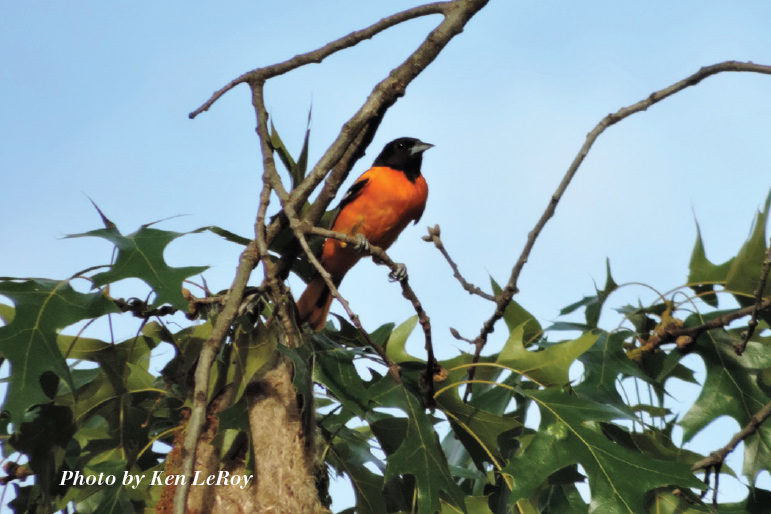

Trees and birds have evolved a common strategy to compete on this earth: both get vertical. Trees get vertical by constructing a scaffolding of trunks, limbs, and branches that enable them to rise from the ground into the upper atmosphere, where they are free of competition from ground covers and shrubs. Most trees form forests, where they compete with each other. Birds get vertical with wings and feathers for flight.
Trees are keystone species that support many other organisms, such as mammals, insects, reptiles and amphibians, mosses, lichens, bacteria, and fungi. Trees provide habitat and subsistence. Wildlife feed on every component of trees: roots, trunks, limbs, bark, cavities, foliage, buds, flowers, and seeds.
Some birds have co-evolved with trees. (Not all, though. Consider the penguin, which adapted to a treeless environment.) For an example, observe a bird’s foot. A bird’s feet are designed to help navigate its environment. Raptors like hawks, eagles, and falcons, have strong feet with sharp talons at the end of the toes to capture and kill prey. Swimming birds, such as ducks and geese, have webbing between the toes to help with movement in water. Perching birds, including chickadees and cardinals, have flexing toes that grasp the tree branch. Woodpeckers and nuthatches have toes that point forward and backward, enabling them to climb up and down and sideways along the trunks and limbs of trees.
Many birds make nests in trees. Hummingbirds make their nests from moss and lichens held together by the silken threads of spider webs, that also secure it to the branch. Owls and woodpeckers make nests in tree trunk cavities. Birds sing and gesture to attract mates perched in trees. They use the branches to sharpen their beaks and crack open seeds. Birds feed on tree fruit and subsequently disperse the seeds they found within the fleshy fruit. Notice the grackles gorging on the fall-ripening fruits of black gum trees as they migrate south.
Neotropical birds, such as warblers, thrushes, tanagers, and vireos spend the summer in the northern hemisphere and the winter in the southern hemisphere. These are mainly insectivores that follow the food source south. Those birds that stay up north for the winter find sources of food in grubs under the bark of trees, or the seeds contained in the cones of pines and spruce trees. Synchronically, the cones of conifers open in the winter to disperse the seeds. Migrating birds return home, where they were hatched, in spring when the newly emerging foliage of oak, linden, beech, and maple trees attracts leaf- feeding insects such as inchworms, loopers, spanworms, and caterpillars. This protein source stimulates the reproductive hormones: mating, nesting, and rearing follow.

When heavy winds blow, major limbs — and sometimes entire trees — fall. The primary reason for this is poor structure, which results...

In the past 10 years, several significant pest and disease issues have become so common that we deal with them every day. Here...

Beech Leaf Disease (BLD) is emerging as the biggest threat to our trees since Emerald Ash Borer.
As we have communicated over the past...